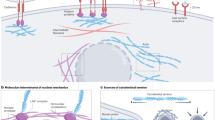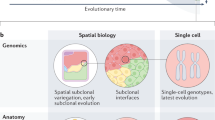Abstract
Occupancy of new habitats through dispersion is a central process in nature. In particular, long distance dispersal is involved in the spread of species and epidemics, although it has not been previously related with cancer invasion, a process that involves cell spreading to tissues far away from the primary tumor.Using simulations and real data we show that the early spread of cancer cells is similar to the species individuals spread and that both processes are represented by a common spatio-temporal signature of long-distance dispersal and subsequent local proliferation. This signature is characterized by a particular fractal geometry of the boundaries of patches generated, and a power law-scaled, disrupted patch size distribution. In contrast, invasions involving only dispersal but not subsequent proliferation (“physiological invasions”) like trophoblast cells invasion during normal human placentation did not show the patch size power law pattern. Our results are robust to temporal and spatial scales, and to the resolution level of analysis.We conclude that the scaling properties are a hallmark and a direct result of long-distance dispersal and proliferation, and that they reflect homologous ecological processes of population self-organization during cancer and species spread. Our results are significant for the detection of processes involving long-range dispersal and proliferation like cancer metastasis, biological invasions and epidemics, and for the formulation of new cancer therapeutical approaches.
Similar content being viewed by others
Article PDF
Author information
Authors and Affiliations
Corresponding author
Rights and permissions
About this article
Cite this article
Marco, D., Cannas, S., Montemurro, M. et al. Homologous self-organising scale-invariant properties characterise long range species spread and cancer invasion. Nat Prec (2007). https://doi.org/10.1038/npre.2007.907.2
Received:
Accepted:
Published:
DOI: https://doi.org/10.1038/npre.2007.907.2



